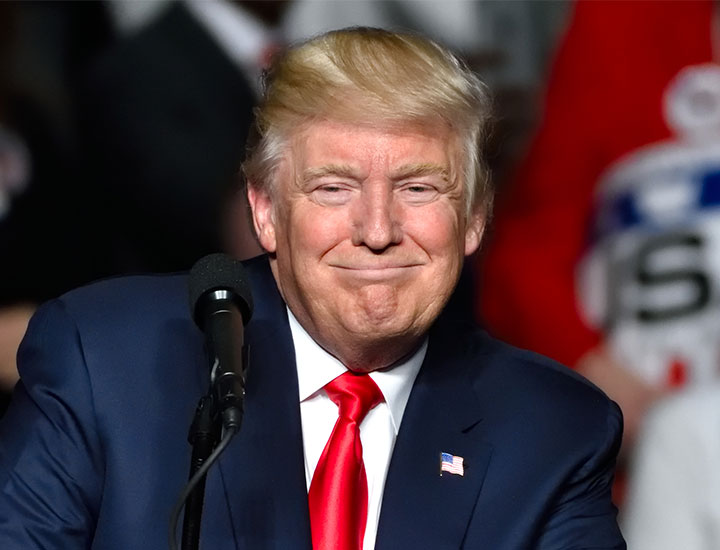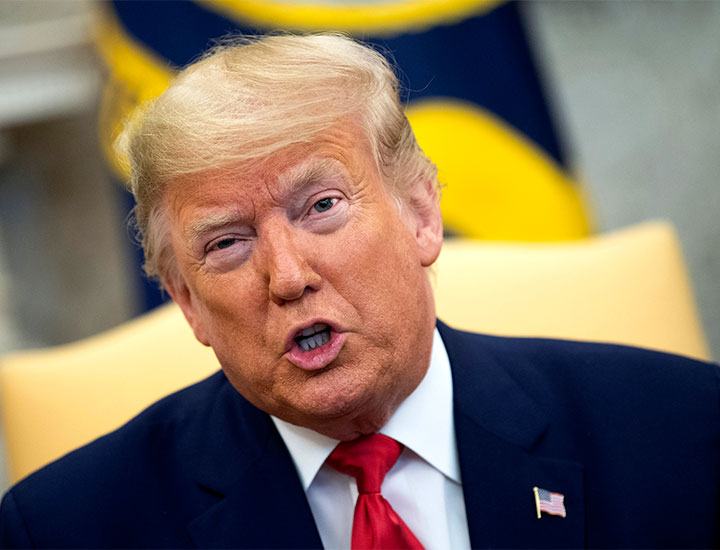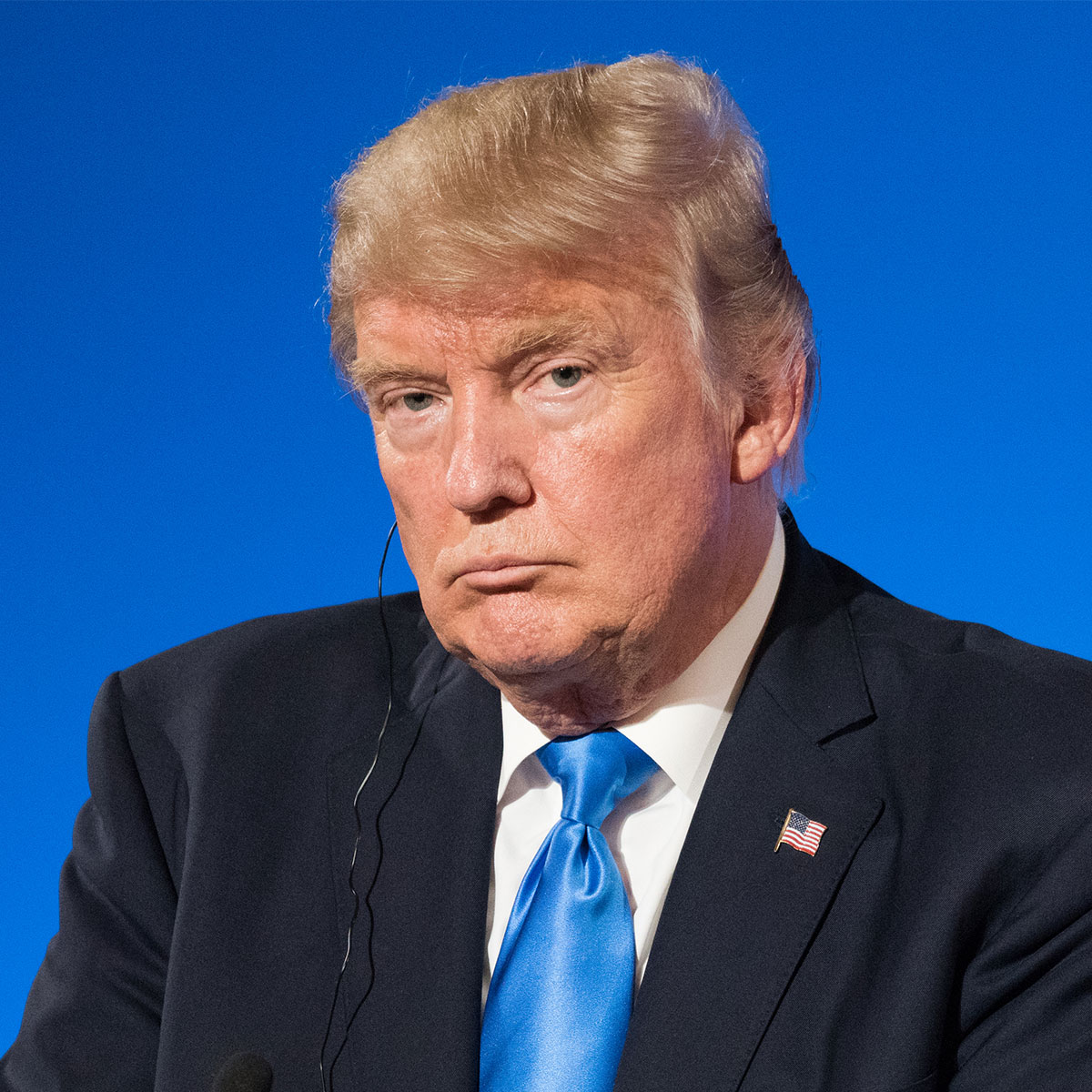The perpetual query of whether Donald Trump’s hair is authentic or a sham continues to be a subject of contention among social media users. In a recently released analysis video, Dr. Gary Linkov, a plastic surgeon based in New York City, analyzes the former president’s hair situation.
The expert explains how the question of whether the 77-year-old’s hair is “real or if he got a hair transplant” is “actually more complicated than that,” and why he believes Trump’s hairdo is a “great example of how hair restoration surgery has evolved over time.”
In a YouTube video shared on October 8th, the doctor first pulled up photos of Trump at the age of four and eighteen to show how his hair “naturally parts to the left side” and how he’s always had a widow’s peak. In 1964, when Trump was eighteen, the doctor was able to show that he had “early slight frontal temporal recession” when it came to his hairline at that point.


Plastic Surgeon And Transplant Expert Analyzes Donald Trump's Hair
To prove his point further that Trump had work done when it came to his hair over time, Linkov then showed photos of Trump's father, Frederick Trump Sr. In the 1970s and 1980s, Linkov pointed out, Trump's father had a "fairly deep recession," but "you can see that in the 90s, Trump's father has a lower hairline," with the doctor suggesting that he used a toupée or wig of some sort to cover up his baldness. This is relevant, according to Link0v, because it appears that the controversial billionaire, like his father, allegedly did this too, later in life.
In the 70s, Trump frequently combed over his hair onto his forehead, Linkov showed, which "concealed the frontal temporal corners" that he was starting to struggle with when it came to hair loss at that point. In 1978 at the age of 32, the doctor said that the "architecture of Donald Trump's hairline changed significantly compared to him at age eighteen."
Linkov noted that the hairline somehow became "straighter, much lower and less natural." If you look closely at the ex-president's hair during this time, Linkov says "there appears to be small islands of hair." He added: "I believe that he may have had a procedure which involved plug grafts."

This procedure, Linkov noted, involved taking little sections of hair from the back of the head and moving them to the front of the scalp and suture close the donor sites.
In 1979 when Trump was 33, Linkov said that "it's almost like Trump's entire forehead is being covered by hair, and part of the reason for that is the hair plugs have been placed low," the doctor suggested. In 1981 when Trump was 35, Linkov said one could again see the "pluggy appearance of Trump's hairline and you can see the orientation of the hairline being straight across," which he stressed is "not natural."
In 1985, when the Apprentice star was 39, Linkov said that "in addition to the procedures that we have already discussed, Donald may have also been on finasteride at this time." When looking at Trump's hairline in photos from that era, Linkov theorized that Trump was using this medication to preserve what was left of his natural hair.
When Trump was 45 in 1991, Linkov said that the "left frontal temporal corner" of Trump's hair looked noticeably different. There was also "scarring visible at the part line," Linkov showed.
"Perhaps Donald may have wanted to cover up the hairline plugs," the doctor guessed, adding: "I believe Donald Trump may have had a rotational flap from the left side," a procedure that was popular and new at the time.

"A flap operation relocates large areas of dense, growing hair. You can use this technique to create to create a complete hairline in the shortest period of time compared to other surgical options," he explained. "Some people online have speculated that Donald Trump may have had a scalp reduction but I believe that it was most likely in combination with one of these flap procedures." In 1992, Linkov pointed out how Trump's hairline was "even further lowered," like his father.
In 2002 at the age of 56, Trump's hairline was "more robust," according to Linkov, and "it's possible that he may have had an FUT procedure around this time."
This type of transplant was popular in the early 2000s, the doctor said, adding that in 2003 at the age of 57, "you can see the significant boost to Donald Trump's hairline, but also the forehead is now nearly completely covered by hair."

When Trump was 58 the following year, Linkov continued, adding that when looking at "the posterior perspective on the left hand side, there was a scar pattern" that was "consistent with the rotational flap" idea that Linkov had previously suggested — further explaining why his hairline has always looked unnatural.
In 2009, when the father of five was 63, Linkov said that there was visible "frontal scalp thinning." In 2011, his frontal scalp somehow started to look "more full," Linkov noted, and "it's possible that he may have had an FUE surgery around this time." This surgery involves taking out hair from back of the scalp, "similar to FUT, but this time with individual punches that are made and scattered throughout a donor area," Linkov added.
Linkov also shared shots of Trump's hair blowing in the wind in 2012 and 2018, showing the unnatural look of his hair and using these images as more examples as to why he thought Trump had work done.

In 2018 specifically, Linkov noted that there was more visible scarring on Trump's scalp, which "may be related to the suspected rotational flap" procedure Trump might have undergone decades ago. "To summarize the potential procedures that I think Donald Trump may have had on his hair, let's start with punch grafts in the 1970s, followed by a left rotational flap in around 1991 with a subsequent possible right-sided rotational flap around the same time. Then, an FUT procedure in 2002 and an FUE procedure in 2011."
Linkov concluded his video with "lessons" and "takeaways" for his audience. "Even people who become presidents are bothered by hair loss," he said, adding: "scars can give us clues into the type of procedures that may have been done."


























